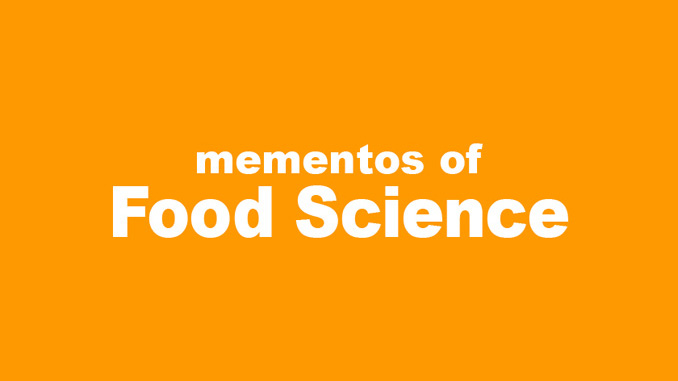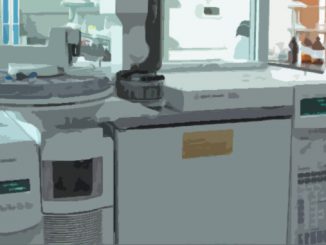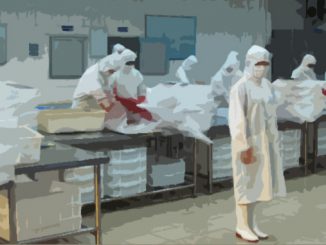
今月末、日経BP 社の「FoodScience」が休刊となる。寄稿のお誘いを受け、過去2年に渡って記事を書かせてもらった。実に光栄なことであった。日経BP社の宮田満氏と中野栄子氏そしてスタッフの方々に大変お世話になった。緒明俊氏には何かにつけ激励を頂いた。妻の飯島みどりは記事の和訳を全て引き受けてくれた。協力いただいたすべての諸氏に、そしてお付き合いくださった読者のみなさんに、この場を借りて、心から御礼申し上げたい。さて、現代バイオテクノロジー由来の食品の安全性確保に向けた国際的な取り組みについて、そしてその成功と課題などについて私ながらの見解を述べてみたい。「過去は序章にすぎず……」と偉大な詩人シェークスピアは『テンペスト』の中で書いている。過去は繰り返されそして現在を形作るのだという考えだ。最初のバイテク作物から引き出された科学的データは、消費者保護と農業バイオテクノロジーの広範な活用という目標の下、食品安全要件を審査する上で重要な基礎となる。しかし、だからと言って過去の審査要件に厳しく固執する必要はない。
This month the Nikkei BP Food Science webpage will post its final articles. I feel honored to have been invited to contribute articles over the past two years. I appreciate the support of Mr. Mitsuru Miyata and Ms. Eiko Nakano of Nikkei BP as well as the encouragement of Dr. Takashi Oaki. I also appreciate everyone who has taken time to read those articles. I especially thank my wife, Midori Iijima, who encouraged me to share my thoughts about biotechnology and food safety and translated them into Japanese. This is an opportunity to offer some observations on the successes and challenges for the international approach to ensuring the safety of foods derived from modern biotechnology. “What’s past is prologue…” wrote the Bard in The Tempest positing that the past is repeated and informs the present. The scientific data developed for the first biotech food crops can provide a basis to assess relevant food safety requirements with the goal of continued consumer protection and broader use of agricultural biotech. However, strict adherence to precedent may not be the best course.
1996年以来、バイテク作物の世界の栽培面積は持続的に増大している。最近のデータでは、多くの発展途上国を含む25カ国、1億3400万ヘクタールで栽培されている(C. James, ISSSA, 2009)。世界市場に導入されたこれらバイテク作物由来の食品は、Codex委員会の指針に基づき食品としての安全性が評価されてきた。Codex植物ガイドラインとその付属文書は、食品の安全性を評価するに当たって、科学的にしっかりと裏付けされた方法であると認められている。
食品安全性評価は2つの基本要素から成り立っている。まず、導入遺伝子の発現の結果生じた新しい物質(通常たんぱく質か、さもなくば低分子)は、安全であると示されなければならない。第2に、意図せぬ作用が健康に悪影響を及ぼす可能性を最小限に抑える対策が取られる。100種類以上のバイテク作物が安全性評価を通ってきている。健康に対して悪影響があったという報告は一例もない。しかるに、現行の安全性試験と規制は継続するのであろうと思われる向きもあろう。しかし、違った見方もあるのだ。
Federoff博士と多くの一流の共著者達(Federoff, et.al, Science, Vol.327, no.5967, pp. 833-834, 2010)は、人口増加、限りのある耕作地および水の供給、そして気候変動の影響という課題に対応するには、農業と食料生産に新しいアプローチが必要だと断定している。その著者達は、安全性の確たる証拠があり、また便益があるということも実証された訳だから、農業バイテクノロジーに対する規制負担を縮小してしかるべきだと言う。さらに彼らは「複雑で費用も時間も要するこの規制制度の最も有害な影響は、農家のため作物を改良しようとする民間の研究者から、分子生物学的方法を試みることを事実上不可能にしてしまうことだ」と断言する。現行の食品安全性評価基準を満たすことは、多くの開発途上国にとっても難儀なことだ。そういった国々の中には、科学的専門知識はもとより、基本的な食品安全インフラを欠いたところもある。
現代バイオテクノロジーの使用に関する規制負担を縮小するのは、とてつもない難題だ。なぜなら、現行の規制制度は、しばしば辛辣な雰囲気に包まれる人々の不安を和らげようと政府が模索した結果形作られていったからだ。バイテク以前は、販売される食品それ自体は、政府による市場導入前審査や認可を受けなければならないということはなかった。92年に米国食品医薬品局(FDA)がバイテク指針を公表した時、継続的に審査をすることなど予測していなかった。むしろ、FDAによる科学的ガイダンスがあれば開発企業が安全性基準を満たすに不足はないだろうと考えていた。
既存の食品成分で何か質問があればいつもFDAに訊いてくるように、特定の問題についても企業は同様にFDAに相談をしに来るはずだ。しかし、海外市場の不確実性に直面し(特に日本)、バイテク企業は新しいバイテク品種のデータをFDAに審査してもらいたいと求めてきた。世界各国はほぼ、FDAの規制制度のような柔軟性を欠いており、認可を義務付けた。これらを変えることは困難だ。政府が問題を再び取り上げるということはめったにない。特に、安全性基準が放棄されてしまうと言い張る人々がいる状況ではなおさらだ。これはかつて規制当局側だった者の一弁だが、では、Federoff博士らによって言及される科学の側はどうだろう。
意図せぬ作用は、バイテク反対グループによって継続的に取り上げられる問題の1つだが、中途半端な解釈が施され人々の不安を引き起こしたりしている。しかし、ビタミン、ミネラル、脂肪酸、自然毒、そのほか農作物の通常の成分について何百もの分析から引き出されたデータには、健康に悪影響をもたらすだろう変化は何も表れていない。
バイテク反対グループの中には、バイテク品種とその親の間にしばしば観察される違いを、許容できない悪影響を及ぼす可能性の証拠として主張する人々がいる。しかし、そのような違いは、健康問題を引き起こすだろう物質に作用したことはないし、一般的にほか商業品種と同様に安全であると見なされる範囲に収まっている。米国学術研究会議(NRC)と医学研究所(IOM)は、意図せぬ作用がバイオテクノロジーを用いた結果起こるであろう確率と既存の植物育種によって起こる確率とを比較分析した(図参照)。結論は、植物の遺伝子を変化させる方法はすべて、意図せぬ作用を生じさせうるというものであった。
若干の既存の方法(例えば、化学または放射線照射による変異誘発)は、バイオテクノロジーよりもそういった作用を引き起こす可能性が大きい。食品安全性評価には意図せぬ作用を考慮に入れるべきだとNRC/IOMは結論を下している。しかし、バイテク作物から得られた食品成分のデータは、バイテク作物の食品成分試験を既存の植物育種のそれともっと適合させてもいいのではということを示している。
バイテク食品中の新しい物質(通常はたんぱく質)は、また違った課題を提示している。既存の方法では、新しい品種由来の食品に新しい物質が生じたとしても、通常、確認されることはない。そういった物質は、多様な遺伝物質が使われている時でさえも安全と見なされる。なぜなら、その植物がそれぞれ関連した種類であるからだ。遺伝子導入技術の出現は、その源が何であれ、どんなものの遺伝子をも植物に導入できるのだということを意味していた。発現したたんぱく資はきちんと把握されており、ゆえに安全性評価を受けられるのだ。
規制当局は伝統的に、食品に「加えられた」新しい物質が安全であることを必ず使用前に証明することを義務付けている。バイオテクノロジーを通して「加えられた」新しい物質は、同じ基準に保たれるべきだということだ。しかし、検査要件を、安全に消費されているたんぱく質に対して、新しいたんぱく資が持つ類似度(あるいは違いの程度)に合わせ調整するのは有益であると思われる。
今日、ほとんどの開発者は遺伝子導入実験を行う前に、新しいたんぱく質がアレルギー誘発物質あるいは毒素に類似しているか生物情報学的方法を用いて見極めている。これは慎重な方法であるばかりか、比較的安価でまた複雑でない。しかし、たんぱく資のアレルギー誘発性の可能性を見極めるのは困難なことだ。もっと安価でいい方法が必要だ。新しい物質の安全性に関するその他諸問題(例えば栄養変化への影響)は、開発方法のいかんに問わずいかなる食品についても評価されている。
科学だけを考えるならば、最初の10年間に積み上げてきたバイテク作物評価の経験から推し量れるのは、現行の食品安全性試験に修正を加えてもいいのではないかということだ。ベテランの科学者や規制当局担当官達にとって、既存のデータを客観的に吟味し、Codex指針の解釈にオプションを提案するのは建設的なことではないだろうか。日本と米国はバイテク食品の安全性評価に当たっては最も多くの経験を有している。ゆえにそのような取り組みに当たって実質的なリーダーとなり得る。
経験を有するそのほかの多くの国からの情報提供も必要だろう。例えば、オーストラリア、ブラジル、南アフリカ、そしてフィリピンや中国といったバイテク新興国からも。Codex指針は、食品の安全性を評価するに当たって最も信頼が置け、そして科学的に裏付けのある方法である。課題とは、安全を確立するために何が重要なのかということと科学的な興味から知りたいということをしっかり区別することだ。
願わくば、バイテク食品安全性評価の過去の経験が、確固とした基礎として未来に生かされていくといいのだが。このウェブサイトに投稿できたのは、私にとって大変栄誉なことであった。ほかの執筆陣の議論に、私の日本語能力の不足からついていくことができなかったのが残念だ。日本語能力向上に今一度ここで締め直しをはかろう。しばらくは日本語のレッスンに集中しようと思う。
Since 1996, the global area of biotech crops has continually increased. Recent data show that 134 million hectares are grown in 25 countries, including many developing countries (C. James, ISSSA, 2009). Foods derived from these crops that have entered the global market have been assessed for food safety under the guidelines of the Codex Alimentarius Commission (Codex). The Codex plant guideline and its annexes are recognized as a scientifically sound, robust approach for assessing safety for whole foods.
Food safety assessments consist of two basic elements. First, new substances (usually proteins or other small molecules) that occur in food as a result of expression of introduced genes must be shown to be safe. Secondly, measures are taken to minimize the likelihood that unintended effects will adversely affect health. Over a hundred varieties of biotech crops have passed food safety evaluations, and there have been no documented adverse effects on health. This might suggest to some that current safety testing and regulations should continue. However, there are other views.
Federoff and a number of distinguished co-authors (Federoff, et.al, Science, Vol.327, no.5967, pp. 833-834, 2010) posit that new approaches to agriculture and food production will be necessary to meet challenges of population growth, limited arable land and water supplies, and effects of climate change. The authors assert that the strong record of safety and demonstrated benefits supports reducing the regulatory burden on agricultural biotech. They further assert that the “most detrimental effect of this complex, costly, and time-intensive regulatory apparatus is the virtual exclusion of public-sector researchers from the use of molecular methods to improve crops for farmers”. Meeting current standards of food safety assessment is also a challenge for many developing countries, some of which lack basic food safety infrastructure and scientific expertise.
Reducing the regulatory burden on the use of modern biotechnology is a formidable challenge. Current regulatory schemes have evolved because governments have sought ways to allay public concern in an often acrimonious atmosphere. Prior to biotech, foods sold as such were not subject to government pre-market review and authorization. When FDA published its biotech policy in 1992, the agency did not foresee a continuous review. Rather, FDA expected that its scientific guidance would assist developers to meet safety standards.
Firms could consult with FDA on specific issues, much as they do for questions about modified food processing approaches. However, in the face of uncertainty in foreign markets, especially Japan, biotech companies sought FDA’s review of their data on new biotech varieties. Almost all other countries, lacking the flexible regulatory system of FDA, enacted mandatory approval requirements. Those are difficult to change. Rarely, do governments re-visit issues, especially in circumstances where some would assert that safety standards are being abandoned. That is said as a former regulator, but let’s look at the science cited by Federoff, et al.
Unintended effects continue to be an issue raised by anti-biotech advocates because they are ill defined and raise public concern. However, the data generated from hundreds of analyses of vitamins, minerals, fatty acids, natural toxicants, and other normal components of food crops have not shown any changes that would adversely affect health.
Some anti-biotech advocates cite the differences that are often observed between a biotech variety and its parent as evidence of unacceptable and potentially dangerous effects. But such changes have not involved substances that would present health issues and are generally within the range that is considered to be safe for other commercial varieties. The U.S. National Research Council and Institute of Medicine (NRC/IOM) analyzed the possibility that unintended effects could occur as a consequence of the use of biotech compared with conventional plant breeding (see Figure). They concluded that all methods of genetic alteration of plants can induce unintended effects.
Certain conventional methods (e.g. chemical or irradiation mutagenesis) are more likely than biotech to create such effects. Food safety evaluations should take into account unintended effects, as the NRC/IOM concluded. However, the data on food composition obtained for biotech crops could support making food composition testing for biotech crops more congruent with conventional breeding.
New substances (usually proteins) in biotech foods present a different challenge. With conventional methods, any new substances generated in food derived from the new variety are usually not identified. Such substances are assumed to be safe, even when diverse genetic material is used, because the plants are related. The advent of gene transfer technology meant that a gene from any source can be introduced into a plant. The protein expressed is known and can be assessed for safety.
Regulatory authorities have traditionally required that new substances “added” to food be demonstrated to be safe prior to use. New substances “added” via biotechnology should be held to the same standard. However, it would be useful to adjust testing requirements to reflect the degree of similarity (or difference) that a new protein has to proteins that have been safely consumed.
Today, most developers use bioinformatic methods to assess whether a protein is similar to an allergen or toxin before initiating gene transfer experiments. This is prudent, relatively inexpensive and not complicated. However, assessing potential allergenicity of proteins is challenging. Better, less costly methods are needed. Most other issues related to the safety of new substances (such as implications of nutritional changes) are assessed for any food regardless of its method of development.
If science were the only consideration, the experience gained from assessing biotech crops over the first decade would support modifying current food safety testing. It could be constructive for expert scientists and regulators to objectively examine the existing data and put forward options for interpreting the Codex guidelines. Japan and the U.S. have the most experience in conducting biotech food safety assessments and would be logical leaders for such an effort.
Input would be needed from many countries that have experience such as Australia, Brazil, and South Africa, as well as emerging biotech countries such as the Philippines and China. The Codex guidelines are the most robust, scientifically sound way to assess the safety of whole foods. The challenge is to distinguish what is essential to establish safety from what is interesting to know scientifically.
Hopefully, past experience from biotech food safety evaluations will provide a sound basis for the future. It has been an honor for me to contribute to this site. I regret that I have not been able to follow the discussion put forward by other contributors. That is all the more reason to end here and study for my next Japanese class!
※このコラムは「FoodScience」(日経BP社)で発表され、同サイト閉鎖後に筆者の了解を得て「FoodWatchJapan」で無償公開しているものです。



